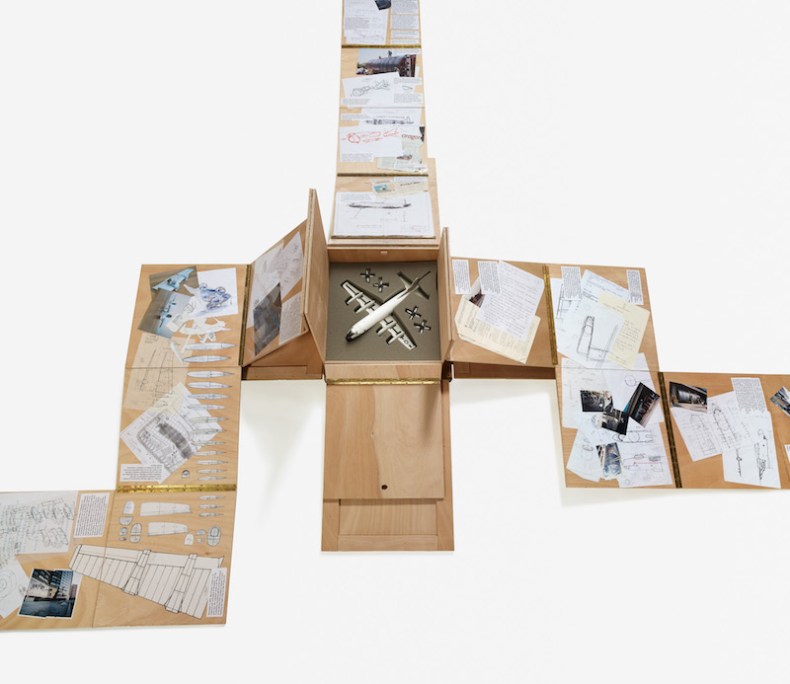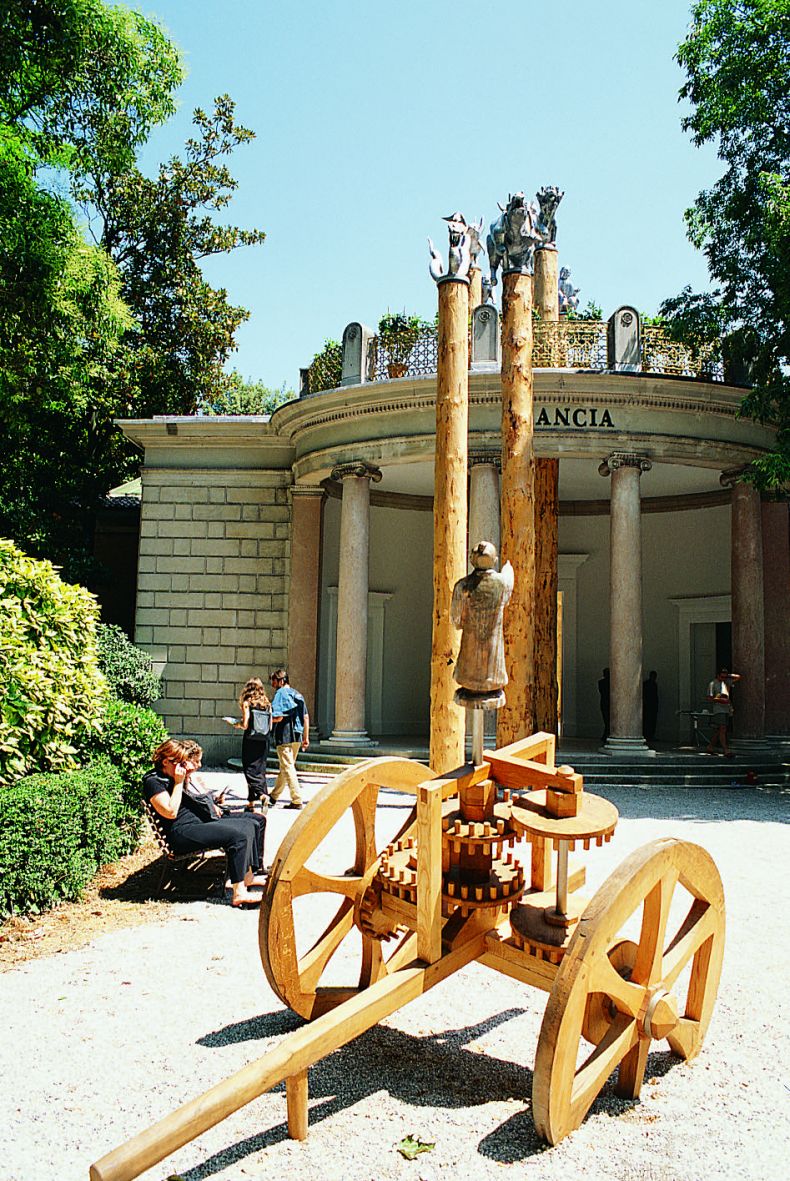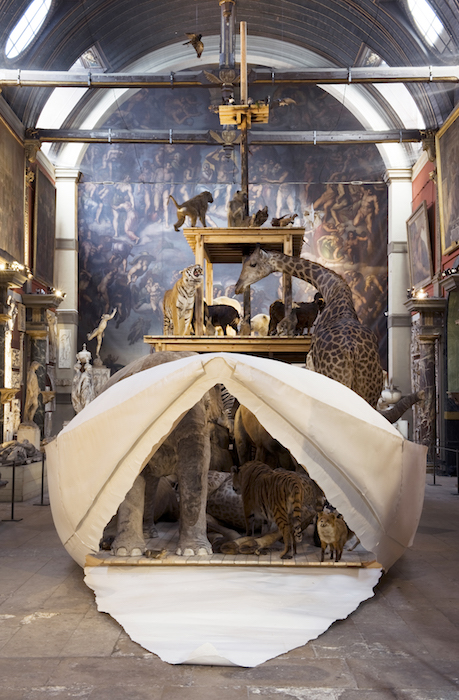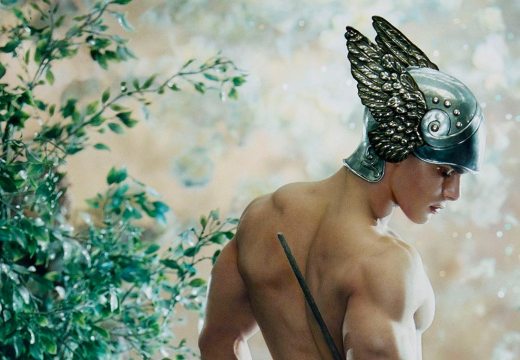You’re the first artist of Chinese origin to win the Wolfgang Hahn Prize. Are European institutions opening their eyes to contemporary Chinese art?
I’d say that the interest of European institutions in contemporary Chinese art dates from the 1990s. In 1993 and 1994 there were many exhibitions on the theme in European museums, followed by similar ones in several Venice Biennales. Of course that focus is linked to the art market’s usual attention to China’s economy and ideology. Now, however, we see a cooling of interest in ‘contemporary Chinese art’, so the award of the Prize actually has a different significance.

Image of Memorandum, Bat Project I–III, 2004, by Huang Yong Ping (b. 1954), acquired by the Ludwig Museum on the occasion of the Wolfgang Hahn Prize. Photo: Saša Fuis, Cologne; © Huang Yong Ping and Gesellschaft für Moderne Kunst am Museum Ludwig
How have you approached a project on the scale of Monumenta? What does the ‘archipelago’ you’ve designed consist of?
The project for Monumenta in Paris is very special of course, especially given the background. ‘Archipelago’ is only one of the concepts to describe it. But the concept shouldn’t be seen as a riddle, as if there were an answer. Artworks are often uncomplicated and clear in their meaning. But I’d rather not say anything more about it for now.
Can you explain how contemporary art was perceived in China in the 1980s – when you came to prominence?
I experienced contemporary art in China in the 1980s as the ‘revolt’ of culture and art. Similar to peasants’ revolts of the past, young people organised themselves, formed their own independent art groups and put on exhibitions. The era was about what was half-known and a dawning understanding, triggered by catching up with half a century of Western modernism in a few years: it was very important to me personally.

Huang Yong Ping. Photo: © Fabrice Seixas
The slogan of Xiamen Dada [the art group Huang founded with contemporaries in southern China in the 1980s] was ‘Zen is Dada, Dada is Zen’. How are the two connected?
By the ‘connection without connection’. One is Western Dadaism from 100 years ago; the other is Chinese Buddhism of the Tang and Song dynasties from 1,000 years ago. However, Zen gave a new interpretation to Buddhist sutras and revolutionised the monastery system. Just as in Dadaism: destruction is creation.
The Centre Pompidou’s ‘Magiciens de la Terre’ show in 1989 was a turning point. Can you talk about why you decided not to return to China?
After the ‘Magiciens de la Terre’ exhibition, I received many invitations to exhibit in Europe and, as a result, stayed here, without giving it much thought. In no time, 20 years had flown by. That’s how it goes, isn’t it? I didn’t plan to emigrate to France. Everything was a matter of the opportunities that arose. I accept them as they come.

One Man, Nine Animals (1999), Huang Yong Ping, Installation view: 48th Venice Biennale, French Pavilion, 1999. Courtesy the artist and kamel mennour, Paris; © ADAGP Huang Yong Ping
Living in Paris, did you experience a cultural shock and, if so, has your practice changed?
You could say that I love the ‘shock’ of ‘conflict’ between cultures. It attracts me. It led me to the phrase: a blow by the West against the East, a blow by the East against the West. By ‘a blow by the West against the East’ I mean an opposition to a return to Chinese nationalism, while with ‘a blow by the East against the West’ I mean an opposition to a West-centric worldview. Paris is a good location for such a position.
Ever since you were a student at art school, your work has linked the traditions of Chinese philosophy and Western modernism (Dada, Foucault, Beuys). What prompted this juxtaposition of the ancient with the modern?
I don’t really know the reason. Perhaps I often confused Western and Eastern, traditional and modern. But today this working method, this collapsing of order and unity, is a ‘carefully considered’ method. Or perhaps not.

Ark 2009 (2009), Huang Yong Ping, Private collection. Installation view: Chapelle des Petits Augustins, École nationale supérieure des Beaux-Arts, Paris. Photo: Marc Domage; Courtesy the artist and kamel mennour, Paris; © ADAGP Huang Yong Ping
There’s a great deal of humour in your work. Is absurdity important in your practice?
It is, you’re absolutely right. How are we to understand the idea of making the artwork? We shouldn’t be burdened by art, but unburdened by it. In other words: if you have a feeling for art, I give you art; if you lose the feeling for art, then I’ll take art away.
In works like Bat Project IV (2004) and The History of Chinese Painting and the History of Modern Western Art Washed in the Washing Machine for Two Minutes (1987/93), you blur the boundaries between Chinese and Western history, culture and politics. The resulting ambiguity highlights the differences, but also the similarities between the two. Do you see parallels on a wider social level? In the ‘special economic zones’ in China, for example?
Overstepping borders between difference and similarity is something we touched on already. It leads to a questioning of categories. On a societal level, the ‘Chinese’ are the new ‘Americans’, but they have come too late, haven’t they? Of course, the unavoidable globalisation has also changed our perspective on the ‘Americans’.
‘2016 Wolfgang Hahn Prize: Huang Yong Ping’ is at the Ludwig Museum from 13 April to 28 August; ‘Monumenta 2016: Huang Yong Ping’ is in the Nave of the Grand Palais from 8 May–18 June.
From the April issue of Apollo: preview and subscribe here














![Masterpiece [Re]discovery 2022. Photo: Ben Fisher Photography, courtesy of Masterpiece London](http://zephr.apollo-magazine.com/wp-content/uploads/2022/07/MPL2022_4263.jpg)
‘Like landscape, his objects seem to breathe’: Gordon Baldwin (1932–2025)